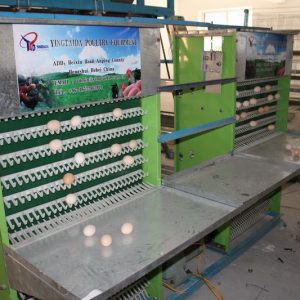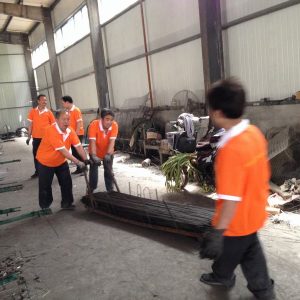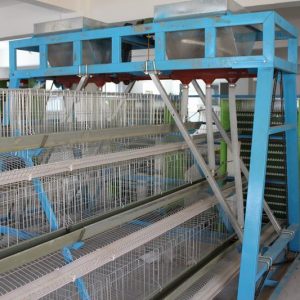
Ramen brown layer chicken breeding technology
How to raise Roman brown layer chicken? The weight of Roman brown layer chickens is medium-sized, and the chicks can eat freely, and it is not difficult to raise them. It has the characteristics of strong adaptability, less material consumption, more egg production and high survival rate, so it has been favored by farmers in recent years. What do you need to know about the breeding technology of Roman brown layer chickens?
How to feed the Roman Brown Egg Chicken?
1. Feeding chicks
The nutritional requirements of chicks Energy: The diet of young chicks should be guaranteed to contain a prescribed amount of energy. Because chickens can partially adjust their feed intake according to their energy needs, it is possible to use a diet to feed a group of chickens of similar size and development. In the first five weeks, the young chicks should have a metabolic energy of about 2900 kilocalories per kilogram, which should be fed openly. Raising chickens more often than cages requires more energy.
Protein: The protein requirement of the chick depends on its requirement for the correct proportion of amino acids. Therefore, the diet not only needs enough protein, but also must be high-quality egg.
Minerals and vitamins: Refer to the requirements of rearing chickens.
2. Feeding during the laying period
In the early stage of Roman egg laying, approximately 19 grams of crude protein is required per day, including 410 mg of methionine and 820 mg of lysine, to maintain normal growth and development and high demand. The protein requirements of laying hens are closely related to the egg production rate.
The protein in the egg-laying diet is much lower than the 18% to 20% required for early growth.
Before laying, the dietary protein of the hens is only 13%, but when the egg production reaches the peak, the protein requirement may be as high as 17-19%; in the late egg production, it is prevented to 14%.
Roman Brown Brown Chicken Breeding Technology
First, the breeding method of Roman brown layer chicken
1. Black-black feeding
Decrease the light time 6 weeks ago, and maintain 8 hours light time from 8 weeks to 18 weeks of age. When the body weight reaches 1450g, start the light stimulation. The light should be increased once a week, and 8 times when it reaches 16 hours.
2. Open breeding
Decrease the light before 6 weeks, the longest natural light time is constant from 8 weeks to 18 weeks, when the body weight reaches 1450g, start to add light stimulation until 16 weeks to 17 weeks until the end of laying.
Second, the feeding of chicks
The nutritional requirements of chicks Energy: The diet of young chicks should be guaranteed to contain a prescribed amount of energy. Because chickens can partially adjust their feed intake according to their energy needs, it is possible to use a diet to feed a group of chickens of similar size and development. In the first five weeks, the young chicks should have a metabolic energy of about 2900 kilocalories per kilogram, which should be fed openly. Raising chickens more often than cages requires more energy.
Protein: The protein requirement of the chick depends on its requirement for the correct proportion of amino acids. Therefore, the diet not only needs enough protein, but also must be high-quality egg.
Minerals and vitamins: Refer to the requirements of rearing chickens.
3. Breeding management in the growing period
Breeding management in the rearing period aims to ensure an appropriate increase in body weight, with a view to reaching 1450g / piece before birth. Starting from 9 weeks of age, it is changed to cooked material, 14% -15% crude protein, 2750-2800kcal / kg, and more than 3% fiber. The fiber content above 3% is conducive to cultivating a good appetite for young hens, so as to obtain a satisfactory peak of egg production and peak continuity.
Starting from the brooding period, strengthen weight sampling to fully understand the house feeding conditions of the flock, such as: density, feeding and drinking space, quality of feed and drinking water, management of temperature, humidity, ventilation, beak cut, feeder and Management of drinking water lines.
According to the epidemic situation of different regions, combined with the actual conditions of the field, formulate a reasonable immunization program, and the immunization of vaccines should strictly follow the requirements of vaccine manufacturers. It is recommended that the operation of various vaccines be completed before the 16-week turnover group.
IV. Feeding management during egg production
The difference between the heat energy of the egg-laying material and the rearing material should not exceed 50 kcal / kg, otherwise it will affect the feeding amount of the chicken. In summer, fats and oils can be added to the feed to improve the negative impact of reduced feed intake due to hot weather. The effect of adding fats and oils (using 7 days, stopping 7 days) for intermittent circulation is better.
Flocks should be transferred to egg laying houses before 16 weeks of age and complete the last vaccination. When the body weight reaches 1450g / piece, light stimulation is started (about 19-20 weeks).
In the early stage of Roman egg laying, approximately 19 grams of crude protein is required per day, including 410 mg of methionine and 820 mg of lysine, to maintain normal growth and development and high demand. The protein requirements of laying hens are closely related to the egg production rate.
The protein in the egg-laying diet is much lower than the 18% to 20% required for early growth.
Before laying, the dietary protein of the hens is only 13%, but when the egg production reaches the peak, the protein requirement may be as high as 17-19%; in the late egg production, it is prevented to 14%.
During egg laying period, daily management should be strengthened, and various production records should be made, such as: medication, water consumption, feed volume, weight gain, and weather conditions.



